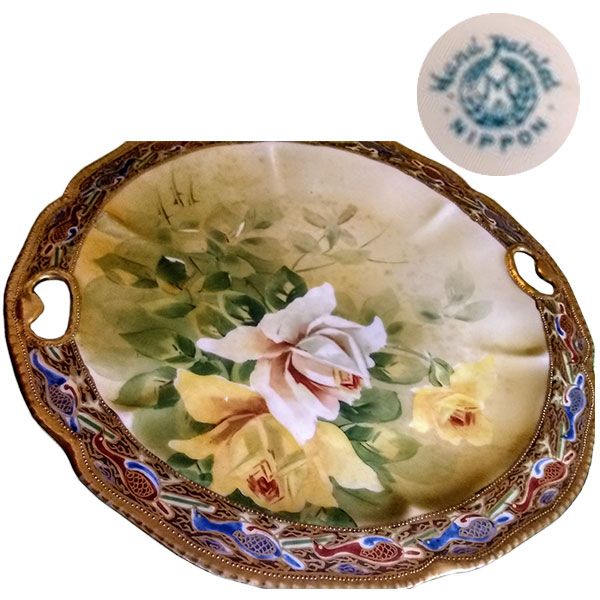Q: I inherited this plate from my Great Aunt. I think it’s beautiful, but I just don’t know much about it. It’s marked “Hand Painted Nippon” with the letter “M” in a wreath.
A: Nippon means “origin of sun” and is the Japanese word for Japan. After the McKinley Tariff Act was passed in 1891, goods imported to the United States had to be marked with the country of origin. Porcelain made in Japan for export to the U.S. was marked “Nippon” from 1891 to 1921. Porcelain made after that was marked “Japan,” but some companies continued to use “Nippon” as part of the company name. Your mark was registered in 1911. Although primarily used from 1911 to 1921, it was used on pieces until the early 1950s. The letter “M” is for Morimura Brothers, a Japanese trading company that had an office in New York City. In 1904 Morimura established Nippon Toki Gomei Kaisha, which made dinnerware for the American market. The factory was located in Noritake, a village near Nagoya, Japan. After experimenting for a few years, the company began shipping porcelain dinnerware to the United States. By the 1920s it was being sold in departments stores, inexpensive chain stores, and mail order catalogs. Nippon Toki Gomei Kaisha changed its name to Noritake Company in 1981. The company is still in business. Hundreds of patterns have been made, not all have names. The company has a complete list of patterns made since 1904. There are several online sites that list and picture Noritake patterns. You can scroll through the lists to see if you can find your pattern.




Leave a Reply
You must be logged in to post a comment.